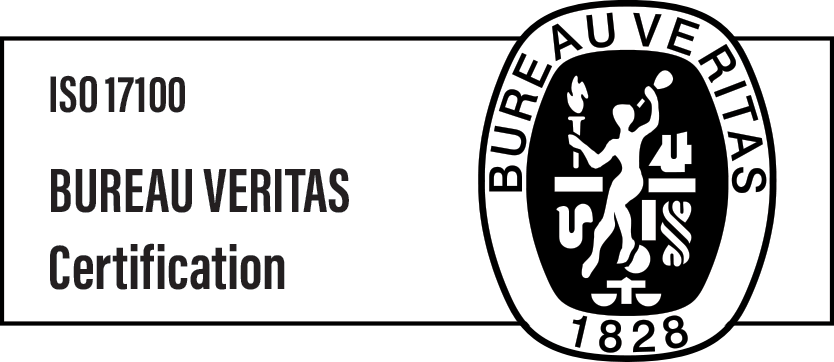Mastering Website Translation with Google Translate

Are you a marketer, CEO or assistant who has been tasked with managing website translation? Have you been struggling to figure out the most efficient and feasible way to approach this task? If so, look no further. Google’s Translate service can be an effective solution for getting your website content translated by professional translators into different languages in order to expand your customer base. In this blog post, we will take a closer look at how you can use Google Translate to help deliver localized and translated versions of your website and make it easier for customers around the world to find and read their language-specific version of your site’s content. We’ll discuss the benefits of using Google Website Translator as well as tips on how best to manage the process of translating a website from beginning to end. With these practical instructions, you’ll be able get started with website translation quickly – enabling you to reach new global markets and grow your business!
Getting Started with Google Translate
If you’ve ever found yourself struggling to communicate with someone who speaks a different language, fret no more. Thanks to google language translator, a free service offered by the search engine giant, language barriers can be easily overcome. Google Translate can instantly translate text, speech, and even images from one language to another, and it’s available on the Google website and as a downloadable app. With the help of the Google Translate widget, you can conveniently translate content on any website with just a click of a button (Google Translate’s free version – Website Translator – is available for non-commercial use). So what are you waiting for? Start exploring the world without any language barriers with Google Translate today.
In today’s globalized world, translating your website has become crucial to reach a wider audience. And when it comes to website translation, Google Translator is one of the most popular tools out there. Using it is simple and efficient, and anyone can do it with just a few clicks. To translate a single webpage using Google Translator, all you need to do is copy and paste the text or the URL into the translation box on the Google Translate website. Select the output language code, and voila, your webpage is translated! However, it’s important to remember that while Google Translate is effective, it’s not perfect. Always proofread your translations to ensure complete accuracy and effectiveness.
Translating an Entire Website
To translate an one page or entire website using Google Translate, first go to the Google Translate website and enter the website URL you want to translate. Choose the language you want to translate the website into, and Google Translate will automatically translate the website for you. Keep in mind that while this tool can be helpful, it is not always 100% accurate, so some translations may be incorrect or have errors.
The internet has made the world a more connected place, but language barriers can still be a challenge for many users. That’s why translating a website into multiple languages is becoming increasingly important. It not only expands your potential audience, but also helps bridge the communication gap between different cultures. When it comes to translating an entire website, however, it can be a daunting task. From making sure every page and piece of content is accurately translated, to ensuring the website’s design is conducive to the new language, there are a lot of factors at play. That’s why having a clear idea of the output language code is crucial. In this example of case, the code is EN-US, but knowing the appropriate code for your target audience is essential for successfully creating a seamless multilingual website.
It’s also important to consider the cultural nuances and idioms of the target language to ensure the translated content is appropriate and effective. Working with a professional translation service or hiring a native speaker can help ensure the highest quality translations. Additionally, implementing clear navigation and language selection options on translated website can make it easier for users of specific languages to access the content they need. By taking these steps, you can successfully create a multilingual website that reaches a wider audience and fosters greater cross-cultural understanding.
Customizing Translations
Customizing translations is an important part of ensuring that your message comes across accurately and effectively to your target audience. If you’re working on a project where your output language code is EN-US, you may need to make adjustments to your translations to ensure that they are not only linguistically correct, but also culturally appropriate. This might mean considering word choice, idiomatic expressions, and even graphics or visual elements. By working with a skilled translator who understands the nuances of your target audience’s language and culture, you can ensure that your message hits the mark and achieves the desired outcomes. With custom translations, you can communicate effectively with your audience across borders and cultures, helping to create connections and build stronger relationships that can last well into the future.
Addressing Challenges and Best Practices
While Google Translate can be a useful tool, it is not without its challenges. One of the main issues with machine translation is accuracy. Machine translation relies on algorithms to translate text, which can sometimes result in errors or incorrect translations. This is especially true for languages with complex grammar rules or idiomatic expressions.
To overcome these challenges, there are several best practices that users should follow when using Google Translate. First and foremost, it is essential to understand the limitations of machine translation and use it as a supplement or support to human translation, not a replacement. Users should also be mindful of the context of the text they are translating, as machine translation can struggle to capture nuance and tone.
Another important best practice is to proofread and edit translated text thoroughly. While machine translation can provide a useful starting point, it should always be reviewed by a human translator to ensure accuracy and clarity. Additionally, users should take advantage of Google Translate’s features, such as the ability to provide feedback on translations, to help improve the accuracy of future translations.
Ways to Monitor and Track the Results of Translation
Monitoring and tracking the results of translation is crucial to ensuring accurate and effective communication. There are several ways to achieve this, including the use of translation management systems, glossaries, and quality assurance checks. These tools help to ensure consistency in terminology, style, and tone throughout the translated content, as well as identify and correct errors or inconsistencies. Additionally, tracking metrics such as translation speed and cost can provide valuable insights for process improvement. Overall, effective monitoring and tracking of translation results is essential for any organization that operates in multiple languages and seeks to deliver high-quality, accurate, and culturally appropriate content to its audience.
Troubleshooting Common Issues with Google Translate
When it comes to utilizing Google Translate to communicate effectively, sometimes things don’t go as planned. But don’t worry, most issues are easily fixable with a bit of troubleshooting. One common problem is incorrectly translated text despite having chosen the correct input and output languages. This is where the output language code comes in handy. Double-check that the original language code matches your desired language and try again. Another issue that may arise is the lack of accurate translations for specific technical terms or industry jargon. In this case, it may be helpful to search for alternative translations or consult a translation professional. Don’t let these minor setbacks discourage you from using Google Translate to its full potential!
Additionally, machine translation may struggle to translate idiomatic expressions or technical terms accurately. Another common issue is the inability to translate certain languages or dialects.
To troubleshoot these issues, users can try several techniques such as double-checking their translation language source text for errors and ensuring that they are using proper grammar and spelling. They can also try translating smaller sections of text at a time to help improve accuracy. Additionally, users can research any technical terms or idiomatic expressions in advance to ensure they are translated correctly. Finally, if all else fails, users might consider consulting with a professional human translator who can provide more accurate translations.
How to Keep Up-to-Date with New Developments in Website Translation Technology
In today’s fast-paced world, staying up-to-date with the latest developments in website translation technology is crucial. With so many advancements happening rapidly, it can be challenging to keep up. However, there are several ways to stay current with the latest trends. One option is to attend conferences or events related to website translation technology. These provide an excellent opportunity to network with like-minded individuals and learn from experts in the field. Another option is to follow industry influencers and experts online, such as bloggers or thought leaders on social media. This can help keep you informed of any new developments or innovations in the industry. Furthermore, subscribing to industry publications or newsletters can also provide valuable insights to keep you in the loop. Staying abreast of technological advancements is one key to success in the digital world, so it’s essential to make time to stay informed.
Conclusions
Google Translator has revolutionized website translations, making it easier than ever for businesses to communicate with customers in their native language. With this powerful tool comes the responsibility to ensure accuracy and completeness—including context that may exist beyond the literal translation of words. While minor projects can do with Google Translate alone, more complex projects will require outside professional language skills in order to provide the best outcomes for users. It is important to take time to assess the scope and purpose of translations in order to select the perfect translation tool for successful delivery of meaningful messages across all languages.
As the world becomes increasingly interconnected, website translation technology is becoming more important than ever. Keeping up-to-date with the latest developments in this field can be a challenge, but there are several ways to stay informed. One of the best resources for staying up-to-date is online blogs and articles that cover the latest trends in website translation technology. Additionally, attending conferences and webinars related to this topic can provide valuable insight into new developments in the field. Finally, subscribing to newsletters from companies that specialize in website translation technology can help you stay abreast of any new products or services they may be offering. By taking advantage of these resources, you can ensure that you are always aware of the latest advancements in website translation technology.


